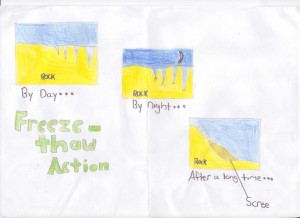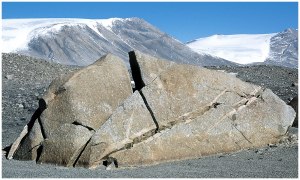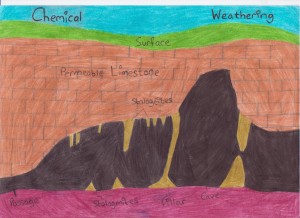Weathering and Erosion
The earth’s surface is constantly changing. This is due to the forces of Weathering, Erosion and Deposition.
Weathering is the breaking down of rocks exposed to the elements.
Erosion means wearing away.
Deposition means dropping off.
There are two types of weathering- Mechanical and Chemical.
- Mechanical (Freeze-Thaw action)
- Chemical (Acid rain on Limestone)
Mechanical weathering
The main example of mechanical weathering is Freeze-Thaw Action.
This happens when water gets into cracks in the rock and freezes. Water expands when frozen and this causes the rocks to break into smaller pieces called Scree.
A rock affected by Freeze-Thaw Action
in a mountainous region
Chemical Weathering
Chemical weathering occurs when acid rain weathers rock, i.e. Limestone. The acid in the rain slowly dissolves the limestone to form Calcium Carbonate. This white liquid then makes its way down through the permeable layers of the limestone to underground caves and caverns. As a result many features are formed. They include Stalagtites and Stalagmites, Pillars and Curtains.
 A statue affected by Chemical Weathering (Acid Rain)
A statue affected by Chemical Weathering (Acid Rain)



